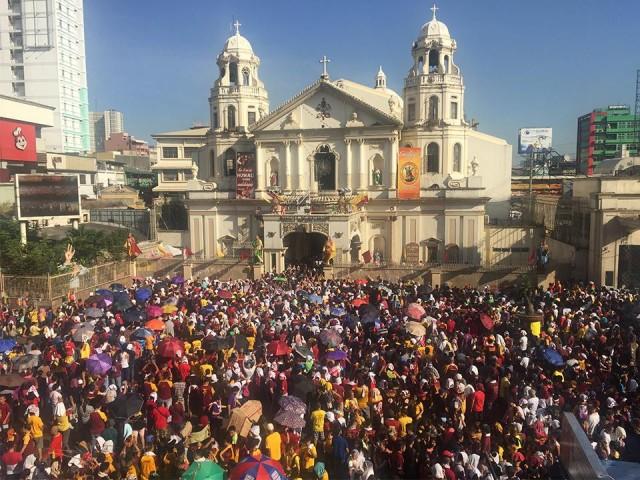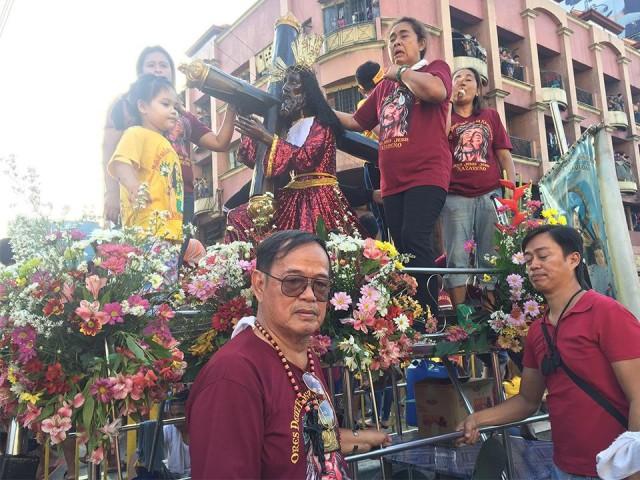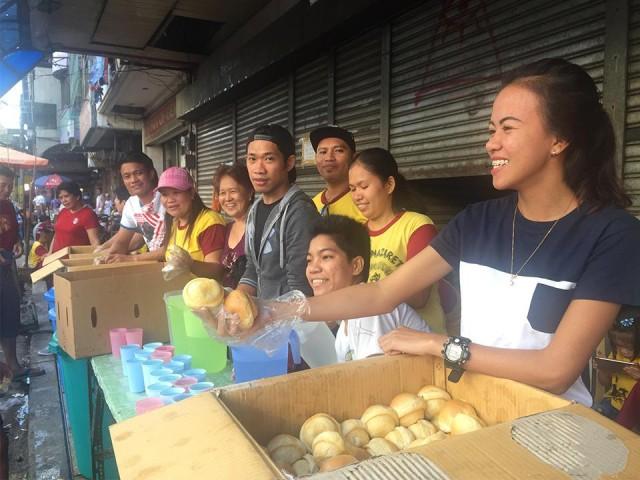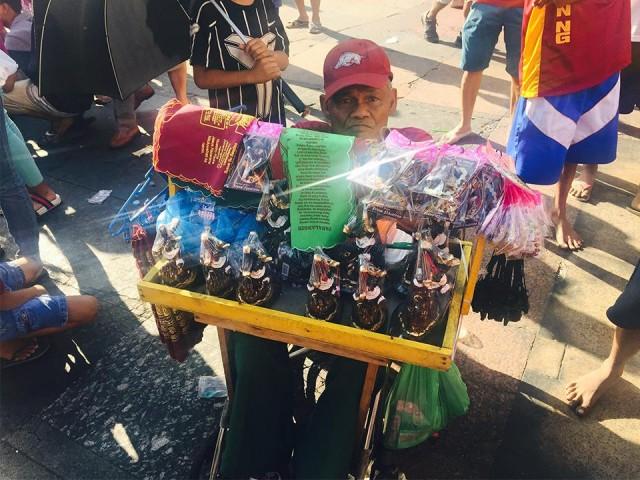What Quiapo looks like before it welcomes the Black Nazarene home
Quiapo teems with life any day of the year, but it is perhaps most alive each January 9, when the church, packed overcapacity, conducts Mass after Mass while the iconic image of the Black Nazarene winds through the streets of Manila in a slow procession or Traslacion, usually attended by over a million people, back to Quiapo Church.
As of 12:30 p.m. on Tuesday, police estimates say there are 1.2 million people in the Quiapo area, including the Church interior, Plaza Miranda, and nearby roads. No untoward incidents have been reported.

The crowd is composed of the Mass-hearing faithful and enterprising businessmen and women, squeezed together under the January heat.
Among the Quiapo crowd are people like Rudy Añonuevo, a self-proclaimed spiritual healer from Quezon City, who parked a replica of the Black Nazarene on Quezon Boulevard, before the incline that leads to the Quezon Bridge.

As they passed, hundreds of devotees, clad mostly in the signature maroon of this popular Catholic festival, stopped by Añonuevo's replica to hand a towel or a handkerchief to waiting volunteers for the traditional wipe on the statue's oiled surface.
For the 72-year-old Añonuevo, who has had a brush with the "miraculous" Nazareno, it doesn't matter if you wipe or kiss a replica or the real thing. He said he had carried the actual image on his shoulders, from when he was 15 to when he was 67 and saw the procession swell in size each year.
He had the replica built in 2002, when he felt his age was enough of a deterrent for him to join the annual procession, which he said sees its fair share of pickpockets scattered among the devoted, the group of friends joining for fun, and the "gaya-gaya," placing a distinction among the procession attendees using a personal measure of their sincerity.
Now, he said what matters is a person's faith. The Black Nazarene is at the Quiapo Church any other day of the year, anyway, he said.
"Walang taong magiging maganda ang buhay 'pag 'di ka marunong magdasal," he told GMA News Online.
He claimed he prays to the replica every day, dresses it in one of the many frocks people donate, and sprays it with a subtly fragrant oil.
The next thing he will do, he said, is give out free lunch.

Beating him to the free food dispensation was Sonia Corpen, whose family has been giving out free bread and water to Traslacion participants for generations, amounting to 80 years.
Corpen said it's her family's "contribution," their own "panata," for the day of the Feast. She said they also gave out free lunch the day before.
Business as usual
But it is business as usual for the street vendors who sell "herbal oils," handkerchiefs and shirts bearing the likeness of the Black Nazarene, and the usual Quiapo fare of pirated CDs, cheap fruits, balloons, and finger food.
One of them is Triumpo Barlizo, 71, who sells miniature fiber glass figures of the Black Nazarene, handkerchiefs, and bracelets adorned with birthstones.

The Bicol native adjusted his cap as he sat on a wheelchair. He was disabled from the waist down in 1979 and lives at a foundation home, but still has to make ends meet because he claimed only his lodging was secured.
His wares were on a small deck attached to the front of his seat and pushing him along is an 11-year-old boy who he said lives near the Tahanang Walang Hagdanan on Arlegui Street, his home.
He might earn P1,000 on the day of the Traslacion, he said.
On regular days? "Swerte na ako kung P500," he said, his voice almost drowned out by the microphone-boosted voices from inside the Quiapo Church.
The procession kicked off from the Quirino Grandstand before 5 a.m., earlier than last year's departure time. In total, Traslacion 2017 lasted more than 22 hours, making it one of the longest Nazareno processions in recent history.
It was attended by at least 1.4 million people. —KG, GMA News




